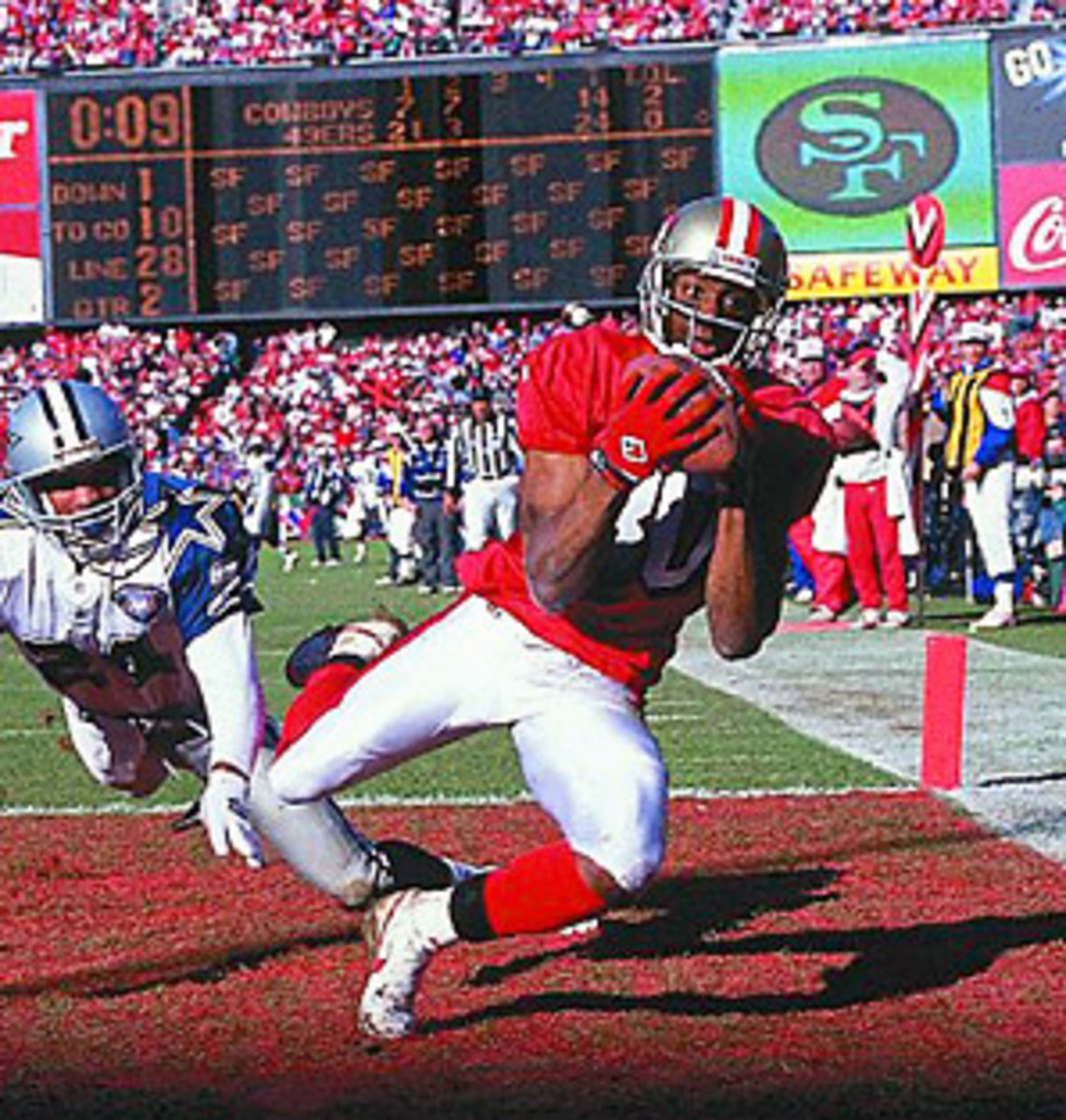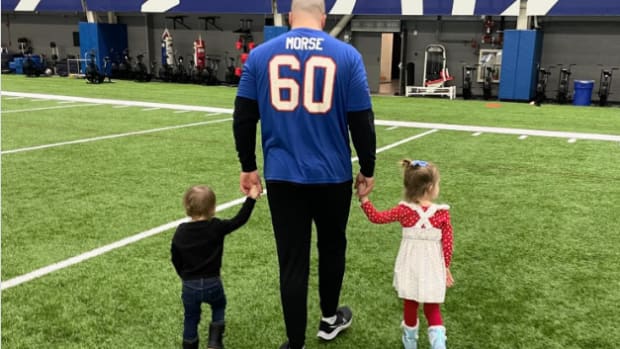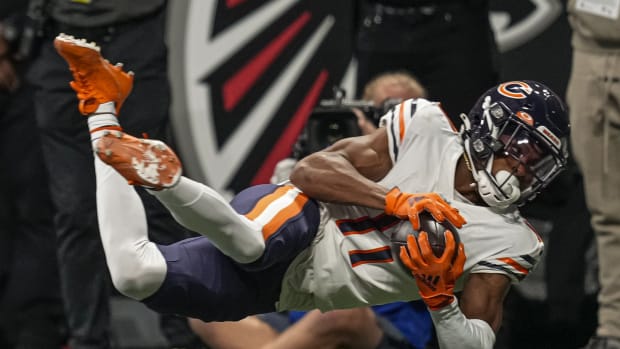
Rice, Smith headline 7-deep class for 2010 Hall of Fame
The names Jerry Rice and Emmitt Smith are synonymous with the NFL's most hallowed records. Now they'll stand together for the league's ultimate honor: Inductees to the Pro Football Hall of Fame.
Both eligible for the first time, Rice and Smith were as close to Hall of Fame shoo-ins as two players could possibly be. Joining them in the class of 2010: Defensive tackle John Randle, offensive guard Russ Grimm, linebacker Rickey Jackson, running back Floyd Little and defensive coach Dick LeBeau.
No one in NFL history has caught more passes or scored more touchdowns than Rice. He is the NFL's all-time leader with 22,895 receiving yards, 1,549 receptions and 208 touchdowns. He was selected to the Pro Bowl 13 times in 20 seasons and was named All-Pro 10 times. Rice had 14 1,000-yard seasons and won three Super Bowls with the San Francisco 49ers">49ers. He holds several Super Bowl records, including career receptions (33) receiving yards (589) and touchdowns (8). He won MVP honors in Super Bowl XXIII.
The only player in NFL history with 11 straight 1,000-yard rushing seasons, Smith broke Walter Payton's career rushing record in 2002 and went on to finish his career with 18,355 yards on 4,409 attempts -- both NFL bests. His 164 rushing touchdowns also stand as an NFL record, and his 175 total TDs are second only to Rice. Smith led the league in rushing four times, was named to eight Pro Bowls and won the NFL MVP award in 1993. Smith also won three Super Bowl rings with the Dallas Cowboys, rushing for more than 100 yards in two of the championship games. He was MVP of Super Bowl XXVIII.
"I thought consistency was the most important trait that I always wanted to portray," Smith said. "The bigger the stage, the bigger the pressure ... I felt if I was consistent over time, that I could achieve the level of the all-time leading rusher."
A former All-American at the University of Florida, Smith also holds more than 50 school records with the Gators, including total touchdowns for a non-quarterback (37) and 100-yard rushing games (23).
Randle was one of the most dominant pass-rushers in history, finishing his 14-year career with 137.5 sacks. He had 35 multi-sack games, including eight games with three or more sacks. He was selected to seven Pro Bowls and was named to the NFL's All-Decade team in the 1990s.
Jackson spent the first 13 of his 15-year career with the Saints, where he was a force as both a pass-rusher and tackler. He had six seasons with double-digit sacks, and was named to six Pro Bowls. Once perennial losers, the Saints never finished below .500 in Jackson's final five seasons in New Orleans.
In his 11 seasons, Grimm helped anchor one of the most famous offensive lines in NFL history, the Washington Redskins' "Hogs" of the late 1980s and early 90s. Grimm's teams appeared in four Super Bowls, winning three. He was selected to four Pro Bowls and was named to the NFL's All-Decade Team for the 1980s. Grimm won a fourth Super Bowl ring in 2005 as a member of the Pittsburgh Steelers' coaching staff and is currently an assistant coach with the Arizona Cardinals.
Little was the Denver Broncos' first-ever first-round pick in 1967. He led the NFL in rushing from 1968-73, and is the seventh-leading rusher in NFL history with 6,323 yards and totaled 54 touchdowns. He was named to two AFL All-Star Games, three AFC-NFC Pro Bowls.
The 71-year-old LeBeau is regarded as one of the best defensive coaches ever. Now in his 36th year, LeBeau won two Super Bowls as a defensive coordinator with the Pittsburgh Steelers, most recently in 2009. He began his coaching career as a special teams coach with the Philadelphia Eagles in 1973, and is credited with inventing the zone blitz as the Cincinnati Bengals' defensive coordinator in the late 1980s. Before becoming a coach, LeBeau played cornerback for 14 seasons with the Detroit Lions, where he was selected to three Pro Bowls.
The Hall of Fame elects four to seven candidates per year. Players must be retired for at least five years, and a finalist needs a "yes" vote of at least 80 percent in the final round of voting to qualify for induction. A panel of 44 voters comprised this year's panel.





































